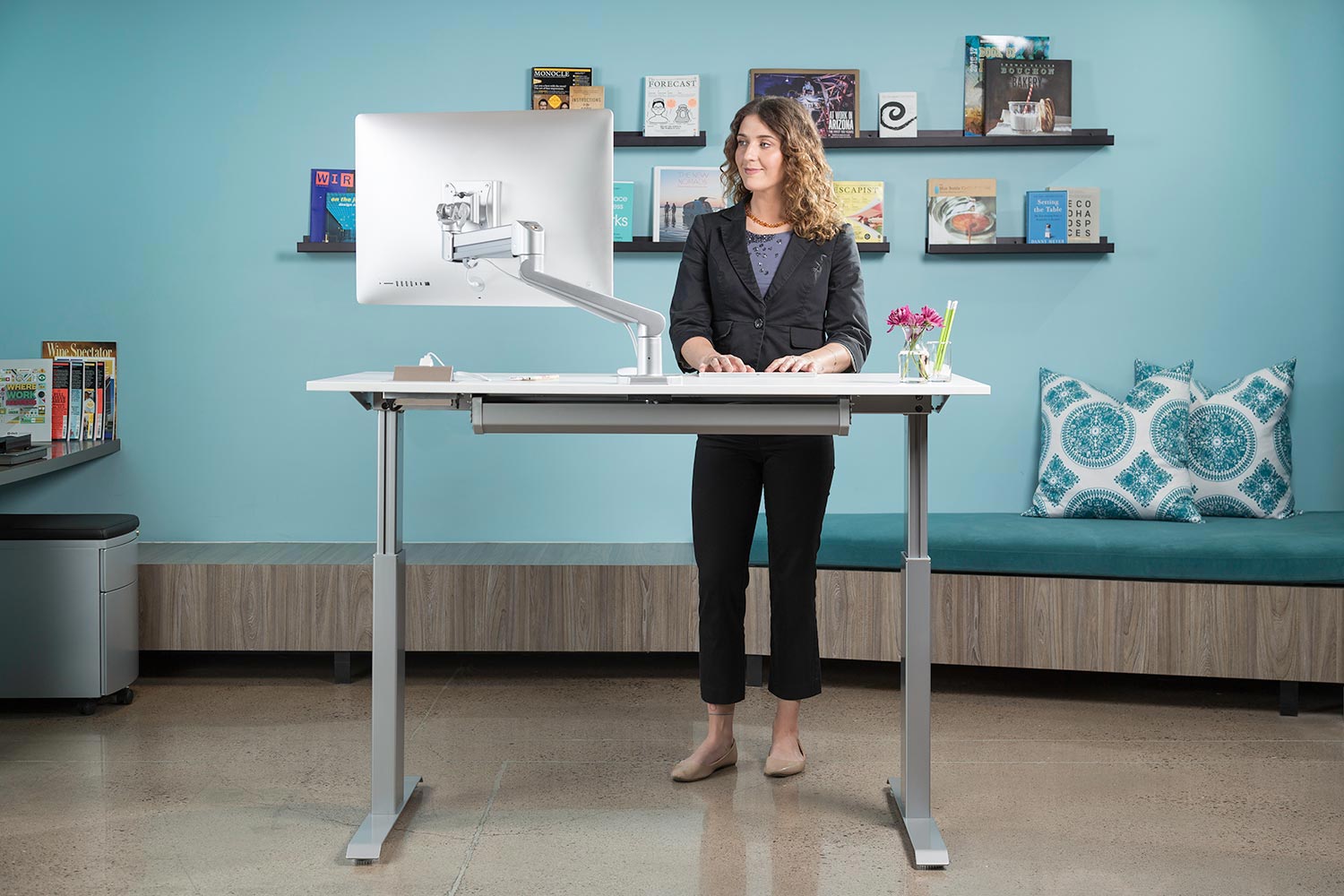
Today's modern workplaces are hazardous to your health, but not in the same ways as in the past. If your work in a modern office, you probably aren't exposed to dangerous materials, and you're not likely to break your back lifting anything heavy, freeze extremities exposed to the elements, or get crushed or pinched between dangerous machinery. The biggest danger of the modern office is the amount of time spent sitting, the lack of any kind of movement, and the overabundant access to unhealthy treats. These factors seem innocuous compared to workplace dangers of the past, but ignored they can cause all kinds of health risks, and lead to an early death. Hereis a study that shows long sedentary periods increase the chance of death in middle aged to older adults. So how can you prevent the modern office hazards?
1) Move more
Ensure you're at least getting up every hour or so and stretch, get a coffee, more about the room. If you need someone to remind you to do this, get a Fitbit, which warns you if you're not taking at least 250 steps per hour. I have one, an as annoying as it can be to break focus, its better (and often more productive, among other benefits) to have a break once in a while. It can make taking more steps throughout the day fun, and it tries to gamify taking more steps. The 'gold' standard of taking 10000 steps isn't all that hard, and I find I can often nearly hit that by taking small walks throughout the day. If I take an hour walk in the evening, I can often hit 15000 total, which should apparently be our new target. I don't find it really as hard to hit if you don't try to do it all at once.
2) Take the stairs
Unless you're disabled there should be no reason to take the elevator. I suppose this depends where you work, but I have to go down and up two flights of stairs to get a coffee, which helps to give me some small amounts of exercise throughout the day. The Fitbit tracks this as well, and will give you badges for climbing a lot of stairs, and allows comparison between days so you can try to break your records
3) Use a standing desk for at least part of the day.
Standing at least part of the day can be really healthy. It burns approximately 50 calories an hour and reduces the amount of time spent sitting, which is always desirable. It reduces obesity risk, cancer risk, and extends your lifespan.
4) Drink lots of fluids
Drinking water, or even coffee or tea and keeps you hydrated and reduces food cravings. It not only helps you lose weight, but it makes you more energetic (to a point, watch the caffeine), boosts your immune system and prevents headaches.
5) Control your eating
if snacking is a problem, bring your own healthy snacks you can munch on guilt free, such as fruits and vegetables, or calories foods such as rice cakes. It's better to have a plan of what you'll eat if you're hungry rather than eating too many sugary treats on a whim. This seems to be a legitimate problem in today's offices. According to the results of a survey, women engaging in office work consume more than 100,000 extra calories a year in office snacks. This works out to more than 400 calories a day. In a vacuum, consuming 100,000 extra calories would result in a weight gain of 26 pounds. However, I suspect that since these women are probably not gaining an extra 26 pounds a year, they probably don't consume enough nutritious food for breakfast or lunch, and this is making up for a shortfall in calorie consumption.
The modern office environment is anything but ideal for the health of modern man. A healthy human should spend several hours a day on their feet moving, but modern life involves far too much sitting, both and home and at work. Furthermore, this is often complimented with the consumption of very unhealthy snacks. To counteract these one must be mindful of their negative effects and work towards a healthier lifestyle. That said, for those who exercise regularly, research now seems to show that an hour of exercise can counteract a whole day of sitting, so if you have the time do it daily, exercise by itself may be enough to counteract the sitting, assuming you can keep calorie consumption in check.

 Posted by Jonathan Weyermann on December 6, 2019 at 12:12 AM
Posted by Jonathan Weyermann on December 6, 2019 at 12:12 AM




0 Comments
Add Comment